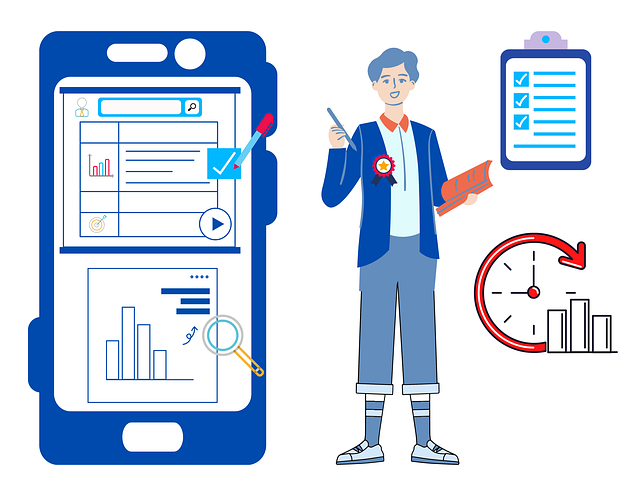AI-powered data visualization and chatbots are transforming business intelligence and food truck operations. By analyzing complex datasets, these tools enable efficient decision-making, optimizing routes, forecasting market trends, and automating data preparation tasks. AI chatbots specifically designed for food trucks streamline scheduling, customer orders, menu updates, and delivery coordination, enhancing operational accuracy and customer service. To implement successfully, businesses should identify needs, select suitable AI platforms, design intuitive conversation flows, rigorously train the chatbot, and seamlessly integrate it with existing systems. Continuous monitoring and optimization ensure a reliable chatbot that meets evolving business requirements, ultimately improving overall customer experience.
In today’s data-driven landscape, AI-powered data visualization is revolutionizing business operations. This article explores how businesses can leverage advanced analytics and intelligent tools to gain deeper insights from their data. We delve into the transformative power of AI in various sectors, focusing on a specific use case: optimizing food truck scheduling with AI chatbots. By integrating these innovative solutions, companies can streamline processes, enhance efficiency, and make informed decisions.
- Understanding AI-Powered Data Visualization for Business Efficiency
- The Role of Chatbots in Optimizing Food Truck Scheduling
- Integrating AI Chatbots: A Step-by-Step Guide for Seamless Operations
Understanding AI-Powered Data Visualization for Business Efficiency

AI-powered data visualization is transforming the way businesses make sense of their complex datasets. By leveraging advanced algorithms and machine learning techniques, this technology can uncover hidden patterns, trends, and insights that were previously difficult to detect. For example, AI chatbots for food truck scheduling can optimize routes based on real-time traffic data, customer demand, and weather conditions, leading to increased operational efficiency and reduced costs.
This innovative approach enables businesses to make data-driven decisions faster and more accurately. Visualizations generated by AI systems are interactive, customizable, and often include predictive analytics that forecast future outcomes. This proactive mindset allows companies to stay ahead of the competition by identifying market shifts early on. Furthermore, AI data visualization tools can automate repetitive tasks associated with data preparation, freeing up valuable time for employees to focus on strategic initiatives and creative problem-solving.
The Role of Chatbots in Optimizing Food Truck Scheduling

In today’s digital era, AI chatbots are transforming various industries, and food trucks are no exception. These intelligent virtual assistants play a pivotal role in optimizing scheduling processes for mobile culinary operations. Chatbots can efficiently manage complex tasks, such as handling customer orders, updating menu items, and coordinating delivery or pickup times, all while learning from each interaction to provide faster and more accurate responses over time.
By implementing AI chatbots for food truck scheduling, businesses gain a competitive edge through improved operational efficiency. They can seamlessly balance high-demand periods with limited resources, ensuring satisfied customers and maximized profits. Moreover, these chatbots offer 24/7 availability, enabling customers to place orders or change schedules at their convenience, thereby enhancing the overall dining experience.
Integrating AI Chatbots: A Step-by-Step Guide for Seamless Operations

Integrating AI chatbots into your food truck operations can streamline scheduling and enhance customer experience. Here’s a step-by-step guide to ensure a seamless implementation.
1. Identify Needs and Goals: Begin by understanding your unique requirements. For instance, an AI chatbot for food truck scheduling might need to handle order placement, table availability checks, and even suggest personalized menu items based on past orders. Define clear objectives to guide the development process.
2. Choose the Right Platform: Select an AI chatbot platform that aligns with your business needs. Consider features like natural language processing (NLP), 24/7 availability, multi-channel integration (website, app, social media), and scalability. Many platforms offer customizable scripts for food service industries, making it easier to tailor responses and interactions.
3. Design Conversation Flows: Create a structured conversation flow that mimics a real interaction with a human agent. Map out different user scenarios, from simple order placements to complex inquiries about special dietary options. This ensures the chatbot can handle various customer interactions effectively.
4. Train and Test: Train your AI chatbot using relevant datasets, including sample conversations, menu items, and common customer queries. Test extensively in controlled environments to identify any gaps or inaccuracies in its responses. Fine-tuning based on test results is crucial for accurate and reliable performance.
5. Implement Integration: Integrate the AI chatbot into your existing systems, such as inventory management software or POS (Point of Sale) systems. Seamless data exchange ensures accurate order processing and real-time availability updates. Ensure a user-friendly interface for both customers and staff to interact with the chatbot without friction.
6. Monitor and Optimize: Continuously monitor chatbot performance after deployment. Analyze customer feedback, usage patterns, and common issues. Regularly update and refine conversational flows, expanding the chatbot’s knowledge base as your business evolves.
AI-powered data visualization and chatbots are transforming business operations, especially in sectors like food trucking. By leveraging these technologies, businesses can optimize scheduling, enhance efficiency, and gain valuable insights from data. Specifically, AI chatbots for food truck scheduling offer real-time adjustments, improved customer interactions, and streamlined management. Integrating these tools is a strategic move towards a more dynamic and profitable business model.
